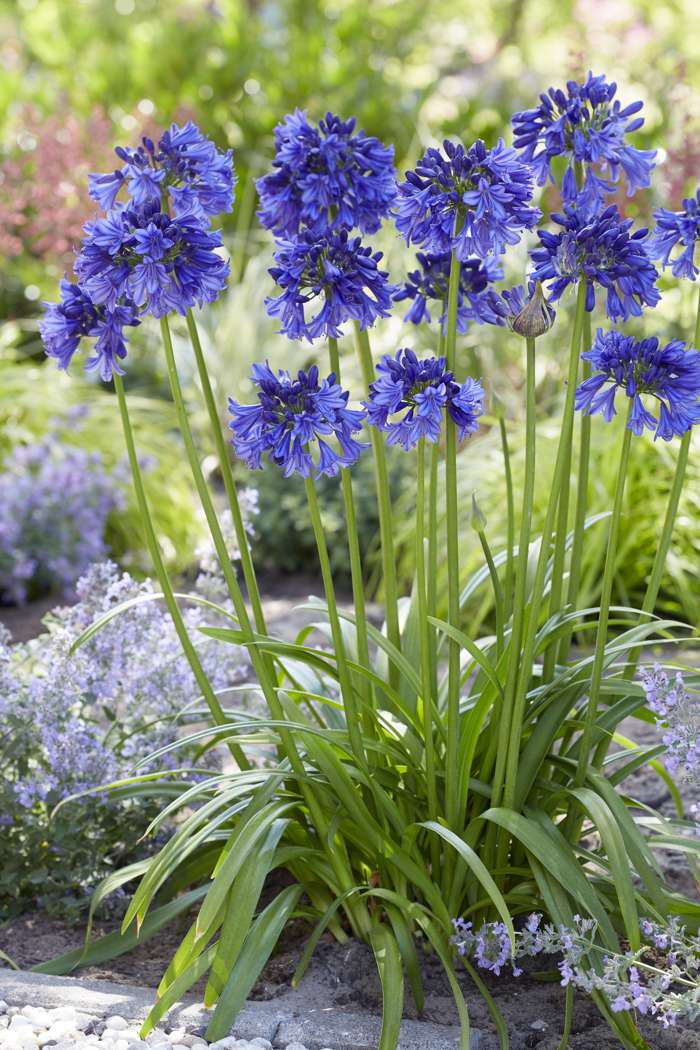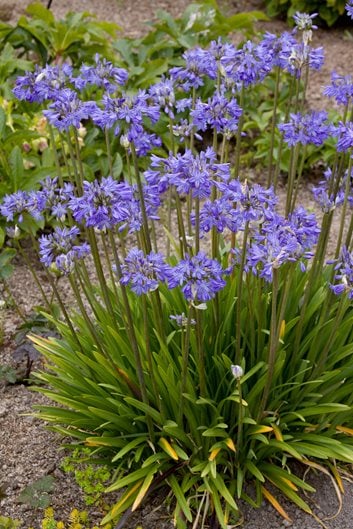Agapanthus Growing Conditions: Soil, Sunlight, and Watering
Agapanthus Growing Conditions: Soil, Sunlight, and Watering
Blog Article
Unleashing the Secret to Successful Agapanthus Cultivation: Advice for a Flourishing Garden
In the realm of gardening, growing agapanthus effectively needs a calculated approach that incorporates various elements of plant treatment. By understanding the nuances of agapanthus cultivation, one can produce an environment where these plants grow and flower abundantly.
Growing Agapanthus: Finest Practices
When growing Agapanthus, appropriate soil prep work is vital for making certain effective growth and advancement of these beautiful flowers. Agapanthus, typically called Lily of the Nile or African lily, thrives in well-draining dirt with a slightly acidic to neutral pH level - Agapanthus. Before planting, it is vital to amend heavy clay dirts with organic matter such as garden compost or peat moss to improve drainage and supply important nutrients for the plants
To grow Agapanthus, choose a place that receives complete sunshine to partial color, as this will certainly advertise healthy development and abundant flowering. Dig an opening two times the size of the plant's origin ball and put the Agapanthus at the exact same deepness it was previously expanding. Delicately backfill the hole with dirt, pushing down securely to remove any type of air pockets around the origins.
Water the recently grown Agapanthus thoroughly and remain to keep the dirt evenly moist, especially during the plant's active growing season. Agapanthus. Using a well balanced plant food once a month can further support the plant's growth and flowering. By following these best methods for growing Agapanthus, you can develop a magnificent display screen of these captivating flowers in your yard
Perfect Soil Conditions for Agapanthus
For optimal development and growing success of Agapanthus plants, ensuring the soil problems are excellent is essential. Agapanthus chooses soil that is abundant in nutrients, so including a balanced fertilizer during the expanding season can advertise healthy development and vivid blossoms.

Watering and Fertilizing Tips
To make sure healthy and balanced growth and dynamic flowers, correct watering and feeding strategies are important for successful Agapanthus farming. Agapanthus plants profit from normal watering, especially throughout the expanding period. It is advised to water deeply when a week, guaranteeing the soil is moist but not waterlogged. During heat or in pots, more frequent watering may be necessary to avoid the soil from drying out totally.
When it involves fertilizing Agapanthus, a well balanced plant food with equivalent parts nitrogen, phosphorus, and potassium can be used in the springtime to advertise healthy and balanced development and blooming. Slow-release fertilizers are excellent for supplying nutrients gradually over an extensive period. Avoid over-fertilizing, as this can result in excessive foliage growth at the expenditure of flowers.
Additionally, including raw material like compost into the soil can boost nutrient levels and improve dirt structure, helping in the overall wellness of the Agapanthus plants. his response By adhering to these watering and fertilizing tips, garden enthusiasts can ensure their Agapanthus plants grow and create stunning display screens of blossoms.
Trimming and Deadheading Techniques
Correct pruning and deadheading techniques play a crucial role in maintaining the health and wellness and visual appeals of Agapanthus plants, enhancing the vital practices of watering and fertilizing for effective growing. Pruning Agapanthus includes removing spent blossom heads, dead or yellowing fallen leaves, and overall shaping of the plant to promote far better growth. Deadheading, the procedure of removing faded blossoms, not just enhances the plant's look yet likewise urges more growing.
When deadheading Agapanthus, it is recommended to trim off the flower stem at the base utilizing sharp, tidy shears. This process reroutes the plant's power from seed manufacturing back right into root and foliage development, advertising a much healthier and much more robust plant. Regular deadheading can expand the growing duration of Agapanthus and prevent self-seeding, which can result in overcrowding.
In regards to pruning, Agapanthus usually advantages from a light trim after flowering to clean up the plant and urge fresh development. Reducing the invested blossom stems and getting rid of any kind of dead or damaged vegetation helps maintain the plant's vigor and overall appearance. Nevertheless, it is necessary to prevent cutting into the crown of the plant, as this can weaken its health.

Protecting Agapanthus From Vermins and Diseases
Applying efficient pest and condition administration techniques is essential to guarding the health and vigor of Agapanthus plants in cultivation. One typical parasite that affects Agapanthus is the Agapanthus borer, a see here caterpillar that passages into the plant, triggering damages to the flowers and leaves.
In addition to insects, Agapanthus are vulnerable to illness such as root rot and fungal fallen leave places. By remaining attentive and dealing with insect and illness article source problems immediately, garden enthusiasts can aid their Agapanthus prosper and grow.

Final Thought
Finally, successful growing of agapanthus calls for appropriate growing techniques, excellent soil problems, ample watering and feeding, regular trimming and deadheading, and protection from illness and bugs. By following these techniques and pointers, garden enthusiasts can guarantee a prospering garden filled up with attractive agapanthus blooms. Agapanthus. Keep in mind to preserve regular care and attention to detail to advertise the wellness and durability of these magnificent plants
When planting Agapanthus, appropriate dirt preparation is important for making sure effective development and development of these gorgeous flowers.Water the recently planted Agapanthus completely and proceed to maintain the dirt equally moist, especially during the plant's active growing season.For ideal growth and flowering success of Agapanthus plants, making sure the dirt problems are perfect is important. When transplanting or planting Agapanthus, guarantee the soil is well-prepared to give the needed foundation for the plants to establish themselves successfully. One common pest that affects Agapanthus is the Agapanthus borer, a caterpillar that passages into the plant, triggering damage to the blossoms and fallen leaves.
Report this page